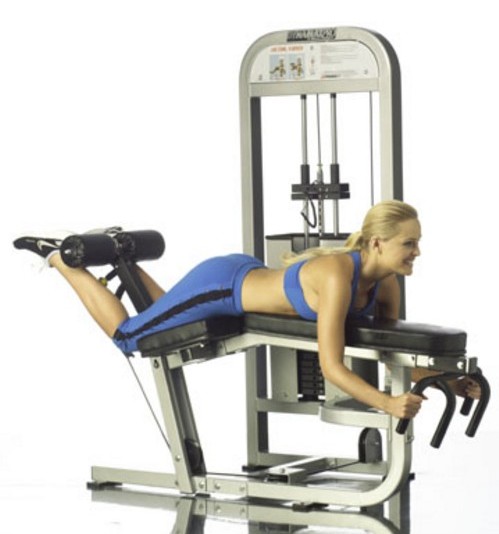Students will discover how to design exercise programs for improving a client’s aerobic and anaerobic capacity. In addition, students will be introduced to the fundamental concepts in movement screening, vocational fitness testing (e.g. police and paramedic), circuit training, and instability training.
Target population: Adults (18-65), healthy
- Course Instructor: Lyndsay Fitzgeorge
- Lab Instructors: Lyndsay Fitzgeorge
- Lab Technician: Jasmine Collins
- Semester: Three
Lab Sections:
- Section 1: Thursday 2 – 4 PM
- Section 2: Thursday 12 – 2 PM
- Section 3: Wednesday 2 – 4 PM
- Section 4: Wednesday 4 – 6 PM
View Lab Exam Feedback
No completed lab exam rubrics currently available
| Key Teaching Points | Expectation: [if 456 equals="Supervised Practice"]Supervised Practice [/if 456][if 456 not_equal="Supervised Practice"]Independent Learning[/if 456] | [579] |
|
| Description: |
- Adjust the machine lever to fit your height and lie face down on the leg curl machine with the pad of the lever on the back of your legs (just a few inches under the calves).
- Tip: Preferably use a leg curl machine that is angled as opposed to flat since an angled position is more favorable for hamstrings recruitment.
- Keeping the torso flat on the bench, ensure your legs are fully stretched and grab the side handles of the machine. Position your toes straight.
- Curl your legs up as far as possible without lifting the upper legs from the pad. Once you hit the fully contracted position, pause for a second.
- Slowly lower your legs back to the starting position. This is one repetition.
Caution: Avoid using so much weight that you start using swinging and jerking as you can risk both lower back injury and also a hamstring injury.
|
| Common Error(s): | |
| Spotting: | |
>>
Return to My Course Home |

